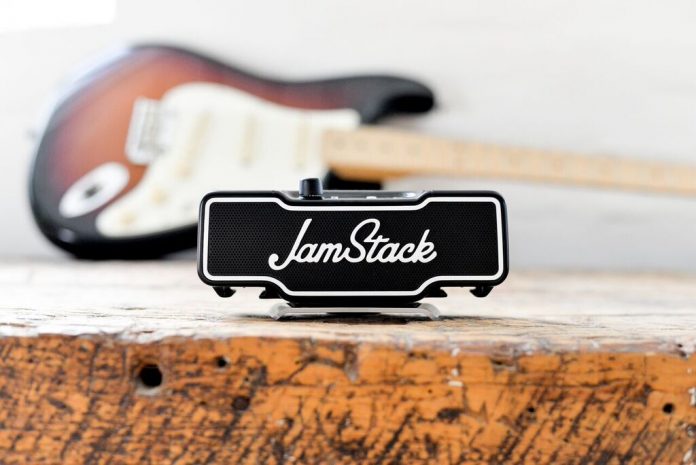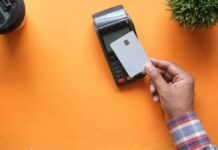Starting a hardware business is tough. There are a lot barriers to entry, not the least of which is financial. Through a bit of creative deal making and industrious problem solving, I was able to take $12,000 in savings and turn it into a 1.4-million-dollar business in under twelve months. Here’s a short version of how I launched my idea for JamStack, a digitally connected amplifier that will bring Millennials back to the electric guitar.
Step one: Idea and validation. I had an advantage. Right off the bat I started as my own customer. I’m a seasoned guitar player, engineer, tinkerer and inventor, and wanted something that alleviated the headaches I was experiencing as an electric guitar player. It took too long to set up, my amps sounded terrible at lower volumes, couldn’t handle backing tracks, and nothing was at all portable or ergonomic. I remember thinking, I wish all of this equipment was just on my guitar.
There were several epigones which lead to the final design, not just one. The biggest being the realization that Bluetooth speaker technology and modern smart phones were now at a place where they could facilitate a superior guitar playing experience. The first iteration was actually a custom-built guitar, complete with 3D printed phone mount and a bunch of bored out holes for the speaker components. It was super fun to play, and I knew I had something, but at the time I was working as a full-time teacher and didn’t know much about business or bringing a physical product into reality.
Step two: Experiment. Fast forward a few years and I noticed someone had created an ultra-premium version of my guitar and raised almost half a million dollars on Indiegogo. I was simultaneously validated and frustrated that I lost out on an opportunity. However, I felt there was still a spark of opportunity here. I noticed their guitar looked bulky, was very expensive and wondered if there was a way I could let people play their favorite guitars, with the same functionality. I had a lot of questions: Where can you mount a speaker on an existing guitar? Would it sound good at the weight restrictions? How would you feel it when you’re playing? Could it mount to any guitar body? Where’s the best position for the phone?
I started experimenting. I ordered a bunch of Bluetooth speakers and phone mounts, and bit from the hardware store and got to working hacking together a prototype to prove to myself I could make something that was fun to use, regardless of how it looked. Lucky enough, I was able to do it. It met all of my criteria and I could see for myself this was possible. I then began seeking some counsel, what is my first step.
Step three: Find partners. I started touring around the innovation hubs in the city until someone gave me the answer. I was directed to go and have a meeting with this great industrial design firm in downtown Toronto called Cortex Design. I was told they have a great nose for sniffing out great ideas and do amazing work.
Paying talented people to design a product for you is expensive, but if you’ve got some things behind you, sometimes the right people are willing to give you a chance. I was able to broker a deal where I paid them enough to cover their costs, in exchange for a return on a crowd funding endeavor, contingent on me landing an awesome crowd funding manager and a great video guy. I think if you’ve got a great idea you can really defend, and that fire of reflective confidence in your eye, people believe in you.
The next person I had to convince was my crowd funding manager Khierstyn Ross. Due to her success, she is inundated with request for her services. I thought I’d make her a custom video, so I could quickly get across the kind of person I was, and the ‘coolness’ of the product. It worked like a charm and after a trial phone call, and then coffee, I was in! I was starting to gain some steam and when I approached my good friends Alix Gould and Dan Slater, who agreed to do a $10,000 video but wait for their money after crowd funding. Yes, I was extremely lucky to get these three partnerships, but if you don’t seem desperate, and are just looking to make something work, chances are there’s people that will be excited with you.
Step four: Get funding. I needed more money. There was going to be costs associated with running the campaign itself, several thousand for ads, retainers for ad specialist, social media personal, PR services, photoshoots, etc. But now I had a business case, and some momentum. So, after writing a business plan for Futurpreneur and the Business Development Bank of Canada, I was given a loan for $45,000 to get me to the next phase and I was set.
Through months of planning and hard work we have raised to date over $300,000 in crowd funding, have since gotten on TV about 7 times, and have attracted several investors. We are now well on our way towards manufacturing, and being a debt free company worth several million dollars, with design and tooling paid.
Step five: Stay focused. All in all, I would say to entrepreneurs with a product based business, draw a line from where you are to are now to where an investor would look at you and go, wow there’s a product, a plan, and some heavy validation. Then do whatever it takes to get there. Don’t get distracted by everything you haven’t sorted out yet, you’ll solve those problems when its time.
Momentum and money have a way of making problems go away. You’re going to get to a point where you need money, and debt can only get you so far. You need to be extremely industrious with all of your resources, structure deals carefully to reward success, and make sure every dollar you spend is getting you closer to investment.
Anyway, it worked for me and even though I work like a dog, it doesn’t really feel like work, or anything else. Cheers.















































